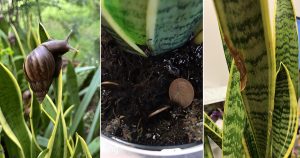Truth or myth—Rice can feed plants, too? Here are the reasons why gardeners are burying rice in their snake plant pots!
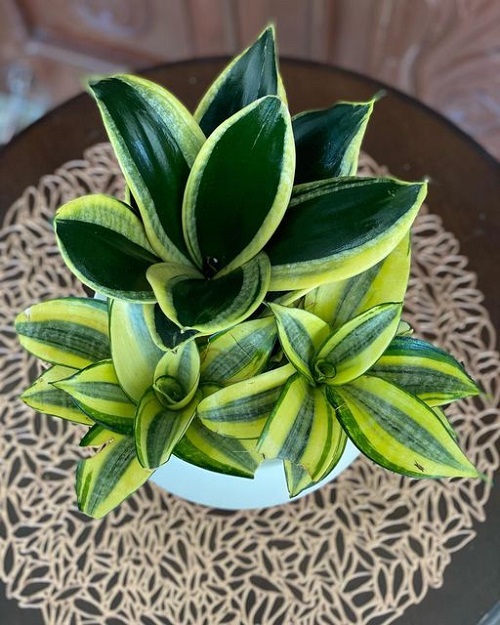
Not every time a hack is trending for plants means it will work. Since every specimen is different, it takes a lot of trial and error to ensure that your plants respond to new routines well. But using rice for your snake plants has been rapidly gaining popularity. So, let us explore why gardeners have been burying rice in snake plant pots.
Why Are Gardeners Burying Rice in Snake Plant Pots?
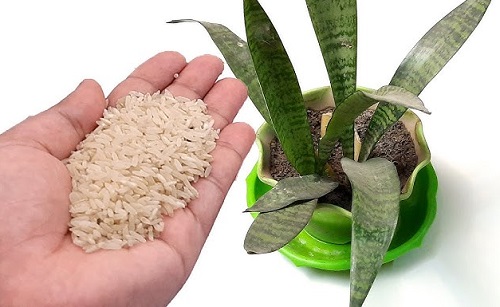
Believe it or not, using rice for plants isn’t something that’s very new. In fact, rice has been in use in agricultural lands for ages to naturally amend the soil. But how does burying rice help snake plants? Read the reasons below.
1. It Enriches the Soil—Slowly but Surely
Uncooked rice—white or brown—contains small amounts of nutrients like nitrogen, phosphorus, and potassium. As it decomposes, these nutrients slowly release into the soil, giving your snake plant a mild, organic nutrient boost.
Now, this doesn’t mean rice is a miracle fertilizer. It’s more like a gentle nudge than a power-packed dose. It works best for low-maintenance plants like snake plants that don’t need heavy feeding. Think of it as a natural, slow-release helper—not a replacement for regular fertilizers.
2. Boosts Soil Life and Structure
Rice can quietly encourage microbial activity in the soil. As microbes break it down, they help improve soil structure and release nutrients. This keeps the soil airy and breathable—which snake plants love.
There’s a bonus here too—rice slightly lowers the soil’s pH over time. Since snake plants prefer slightly acidic to neutral soil, that shift can actually help maintain a healthy growing environment. Still, it’s smart to check the pH if you’re using this trick long-term.
3. It Helps With Moisture Control
Snake plants hate soggy soil, and rice might help a little with that. When buried in small amounts, uncooked rice can soak up excess moisture, helping prevent root rot and letting the roots breathe.
That said, this is more of a supporting role. Good drainage and proper watering are still the main heroes when it comes to moisture control. But rice can be a small backup player if used carefully.
How to Use Rice in Snake Plant Pots
1. Identify the Right Variety of Rice
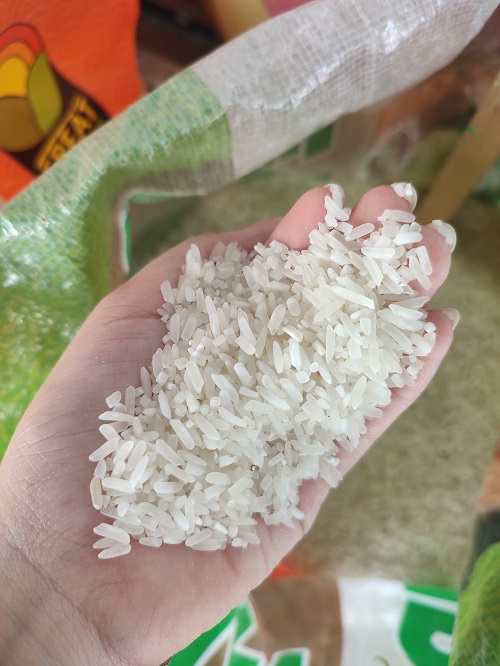
Many people say that there is no right rice you can use for your plants, as the nutrients in all types are the same. However, you should favor brown rice over white rice as it has an outer bran layer that contributes to better soil health. Additionally, do not use cooked rice for your plants, as this can harbor bacteria that may damage your plants.
If you’re unsure whether to use grains or water, start with rice water. It’s less risky and won’t attract pests as easily. Plus, it’s super easy to make. Just soak uncooked rice in clean water for about 30 minutes, strain it, and use the liquid to water your snake plant. It’s a gentler method and less likely to cause mold or pests.
2. Less is More!
When it comes to burying organic nutrients in the soil, you should never overdo it. If your snake plant is in a pot of a diameter between 4 to 6 inches, use only a teaspoon of rice in the soil. For a bigger pot, you can go for a tablespoon.
3. Refresh the Rice Every Few Weeks
As the rice breaks down in the soil with time, you will need to top it up. Usually, you can go ahead with the addition every 4 to 6 weeks.
Note: You must discontinue using rice immediately if you see any signs of fungal growth or unpleasant odors from the soil.
4. Nothing Too Deep

Do not go around digging up your whole plant just to add rice to the soil. You can just mix it up in the top layer of the soil. Also, ensure that you are not putting it too close to the roots of your snake plant.
5. Monitor Your Plant and Soil

This is super crucial. You must always be super vigilant about signs of mold growth, as mentioned above, the presence of pests around your plant, or too much water retention in the soil. In case of pests, remove rice from the pot immediately. You could even repot the plant for extra safety.
If your snake plant begins to grow new leaves or existing ones look greener and more upright, the rice is probably helping. But remember—improvements are subtle and slow. If your plant already looks happy and healthy, you may not notice any dramatic changes.
What Are The Risks?
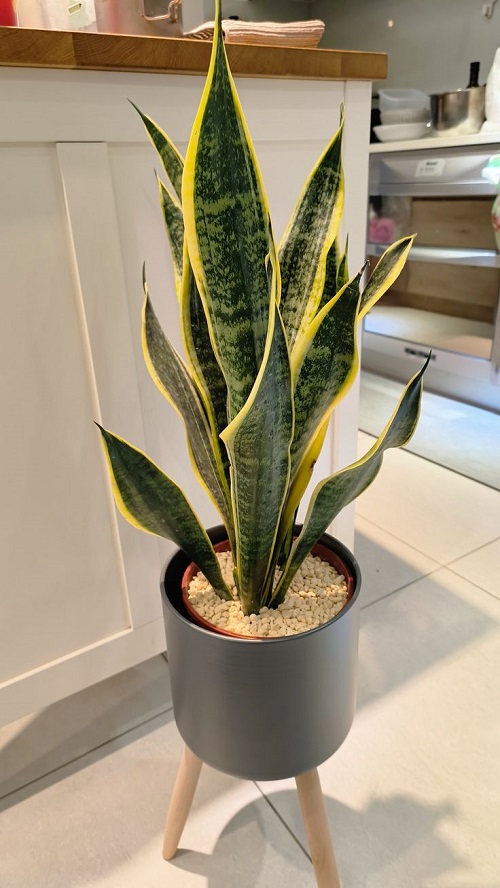
Just as every coin has two sides, there are certain risks to burying rice in snake plant pots, too. You need to know the risks to make an informed decision on whether to use it.
1. Can Attract Pests
Whenever you use organic things around your plants and soil, you run the risk of attracting pests. While some do say that rice can deter pests, you can never be too careful. If the soil is too moist, the rice can decompose too quickly, attracting ants or rodents, especially if you are growing your plant outdoors.
2. Possibility of Mold and Fungi Growth
Due to the starch content in rice, it serves as an important source of energy for the good microbes in the soil. But that does not mean it cannot feed unwanted bacteria and fungi as well. This leads to the possibility of the growth of mold or fungi when you bury it in the soil, especially if the soil is damp.
3. May Lead to Unwanted Aeration
As mentioned before, rice leads to increased microbial activity in the soil that helps with soil aeration. However, too much of a good thing is always bad. This microbial activity can often lead to changes in soil structure, making it more aerated than best for your snake plant.
4. Not a Substitute for Proper Care
Rice, or specifically washed rice water (WRW), is an excellent plant fertilizer. However, it can never fulfill the role of other factors such as lighting, watering, pruning, or general care of a snake plant, regardless of how low-maintenance it is.
Should You Try It?
In this article, we have covered both the pros and cons of burying rice in your snake plant pots. While there are many advantages to trying this hack, there may be some hiccups, too, if you are not doing it right. The key is to follow the instructions provided, do your own research, and go ahead with trying it for your plant.
If you do try out this hack, let us know how it goes for you in the comments below!

